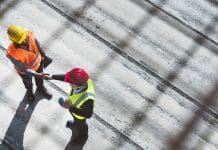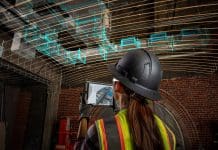Shona Snow, LHC head of procurement, explores how planning consultants can engage with hard to reach voices in communities, with the help of Built-ID
Planning consultants or anyone working in communications will be familiar with the concept of hard to reach communities. It is used to refer to members of a community whose voices haven’t been fully represented during a consultation or engagement process, often because there has been some form of barrier or challenge in communicating with them. It is something that has become accepted as the norm, and the result is that these groups are noticeably absent from the engagement process. It stands to reason then, that the places that we design are not fully representative of the needs and interests of our communities.
These groups are varied. It may be young people, who aren’t part of the normal democratic process, people without access to certain technologies, those for whom English might not be their first language, and people who are especially disadvantaged or just struggling with other things in life. Ironically, it can also be the very people that the proposed scheme wants to make a difference to.
It makes you wonder whether this is a slightly negative term for referencing the silent voices, the ones who have yet to engage on decisions that affect them.
How can Built-ID give hard to reach groups a voice?
The first time I heard about Built-ID I was blown away. Built-ID is the tech-for-good innovator behind the market-leading community engagement platform, Give My View. By making it fun, quick, and easy for hard to reach groups to have a constructive influence on decision-making, Built-ID consistently generates unprecedented community engagement results for industry leaders, both in the property industry and increasingly beyond.
The principles behind the software were staggeringly in tune with our own philosophy, which was a major driver behind the Architect Design Services framework (ADS1.1). We wanted to appoint architects who had fresh new approaches based on lived experience, that understood how to tap into and relate to all members of a community, especially those typically under-represented groups.
When I met the founder, Savannah de Savary, something about her made me think of Steven Bartlett of Social Chain and Dragon’s Den. That tech-savvy person with a higher social purpose, that millennial entrepreneurship, someone highly articulate, inspiring, warm, and driven – one of those people who make you stop and think that perhaps the future is in safe hands after all.
Why do we call them “hard to reach”?
When I spoke to Jacqui Flynn, a Regeneration project manager from a London council, she explained why the term “hard to reach” doesn’t quite cover it:
“They’re not hard to reach. They could be described as ‘hidden’ or ‘despondent’ communities. This is sometimes due to a history of being let down and mistrusting authority. We as the service providers don’t always succeed in giving them the appropriate channels or forums to be heard. The challenge for us is to communicate in a way that builds trust, overcomes our own unconscious bias, gives them a reason to believe it’s worth their time to invest in the engagement process, and that their views matter.”
So, what about young people?
“With young people it’s in fact being able to relate to them and speak their own language. We find and appoint Youth Ambassadors at places where we know young people will hang out and socialise – like open mic nights for instance. It’s helpful to speak to them within their own environments.”
It’s admirable the lengths council officers will go to, and these are people I have worked with for many years who are deeply passionate about their role in serving local communities. By using a tool like Give My View, I see an opportunity to cut through and get right to the residents you want to target.
If you want to know more about community engagement and best practice, LHC are hosting a webinar on 31st March with guest speakers from Willmott Dixon and Portsmouth City Council as well as a number of others who are leaders within their community and really making a difference in what they do.
Find out more about Built-ID’s community engagement software Give My view. Contact sales@built-id.com

















